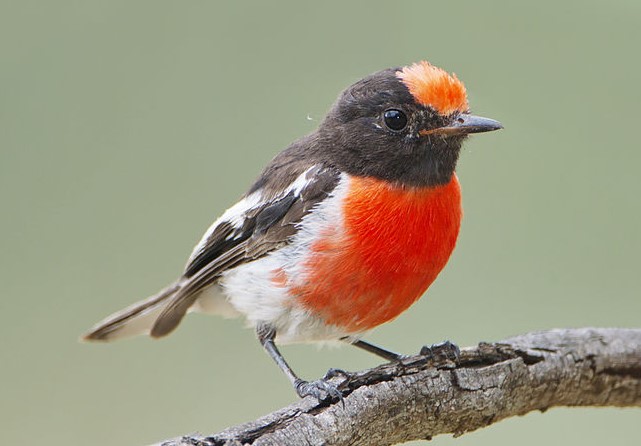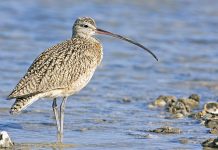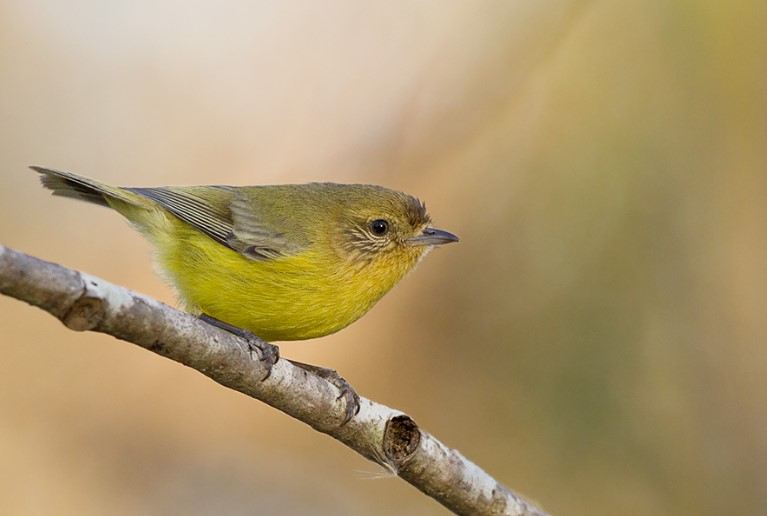Red-capped Robin (Petroica goodenovii) is a small passerine bird, representing arid mallee, mulga, and bulloke scrubs across inland Australia.
The Red-capped Robin is one of the smallest and most brightly colored birds. It is also known as Redhead, redcap, robin red-breast, or red-throated robin. Local people across southwestern Australia called “menekedang”. In Kimberley, it is named “Kuburi”. It is a sexually dimorphic species of vibrantly colored robins in the family Petroicidae.
Vocalizations: Red-capped Robin’s call is a soft, dry tick, repeated slowly by both sexes. The song of the red-capped robin is low, insect-like rattling trill, dtit-dtit-dtrrr-it, repeated by the male.
Its feeding habits, however, are different. Keeping to the open, lower stages of the scrub, usually within a meter of the ground, it forages by perch-and-pounce on a range of insects: grasshoppers, bugs, beetles, flies, moths, wasps, ants, and tiny mantids; a high proportion of caterpillars are fed to nestlings. Feeding birds flit from perch to perch bare branch, stump, or post short, low, undulating flights.
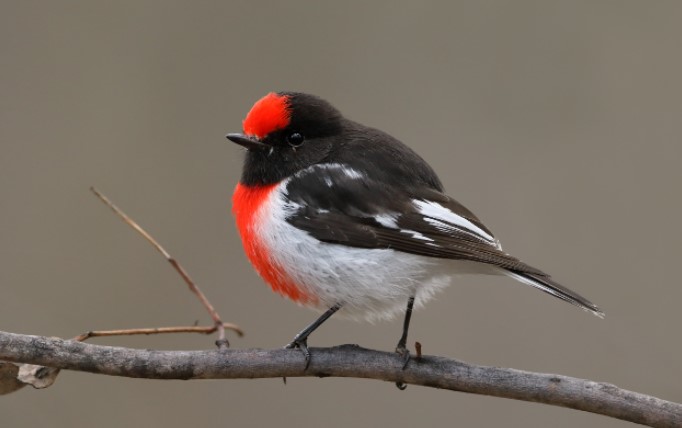
In a hunched posture, they watch and wait for varying periods of time, silent and motionless except for wing flicks and tail flicks as they land. When they spot prey, they dive on it, usually on the ground, and then fly back to a perch to eat. Some birds also hunt flying insects briefly by hawking out and hopping and shuffling in debris on the ground, presumably to flush them out.
Over much of their range, they are sedentary or only locally nomadic, but northern populations seem to wander farther in winter. Established pairs may remain together, but otherwise, robins are solitary. By signing from low vantage points, a male advertises his territory and courts a female by offering her food, often beginning with a fast flight. As the male approaches with food, the female lands and quivers her wings. As he builds the nest, he brings food to feed her at the nest site or close by during the eight to ten-day building process.

She sometimes drop her wings over the edge of the nest as it nears completion. This is after positioning the material she carried. She alternately pokes at the nest and nestles down, for up to half a minute each visit, before raising her tail and leaving with a dropping, curved flight. There may be a delay of several days between the nest completion and the laying of the first egg. This is particularly early in the season or following inclement weather. This is the smallest nest in the robin’s system, and it is built entirely by the female. If there is a second clutch, the nest can be used again.
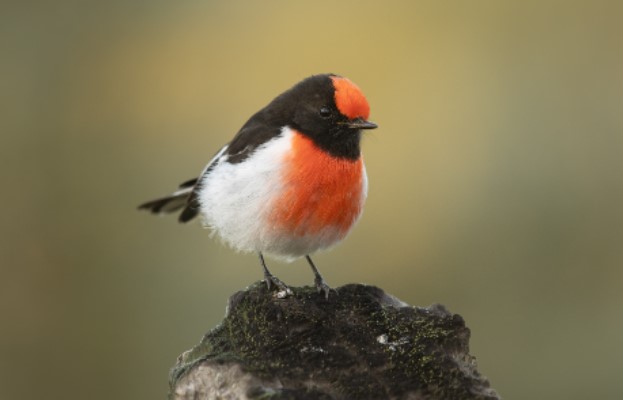
Both parents feed the nestlings equally, although when the female is busy brooding or shading the young, the male compensates by providing more food. Following a feed, a nestling may wiggle around, expose its rear and excrete a fecal sac which the parent carries away or occasionally eats. Approaches to, and departures from, the nest are always silent. Parents continue to feed their young for three weeks after fledging. If there are only two, each parent tends to one.
A Red-capped Robin is about 110-115 mm long. MALE: Upper parts are dull black, with conspicuous bright red fore-crown. Wings and tail are black, with a broad white stripe on the top of the wing covers that runs into two irregular white bars in flight feathers. Webs of outer tail feathers white. The throat is dull dark, sometimes with a wash of red; the breast is bright red; the rest of the underside is white. Their eyes are dark brown. Bill and feet are black. May breed in immature plumage.
The female bird’s upper parts are russet-brown with a rust-red fore-crown. The wings and tail are grey-brown with irregular double buff-white wing stripes; the webs of outer tail feathers are white. Underparts are cream-white, washed brown on the breast. The immature bird resembles an adult female but lacks a red-brown forehead. Young males have red streaks on their breasts. The juveniles are streaked or mottled brown and buff white.
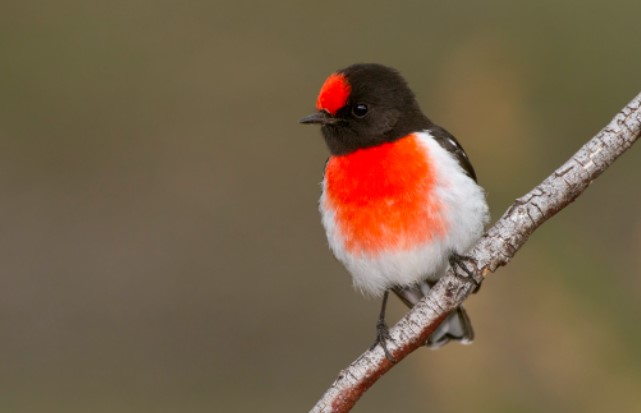
Nesting and breeding season lasts from July-August to December-January. Nest: a compact cup of bark strips and grass bound with cobwebs and adorned with lichen and spiders’ egg sacs; about 38 x 31 mm inside, lined with vegetable fiber, fur, and feathers; 0.5-10 meters above ground on a branch or trunk crevice. The robin lays two or three eggs, which are pale blue-green to grey-white dotted with grey, brown, and lavender co-form zone at the large end; rounded-oval, about 1the size of 15 x 13 mm. The incubation period is about two weeks for females. Young fledge in about 14 days.
Red-capped Robin is well-dispersed in light timber, mallee, mulga, and grassland areas of the interior; it moves locally along the coast to winter in the west—absent north of 20°C. There is no race.
Read More: Pink Robin (Petroica rodinogaster)
